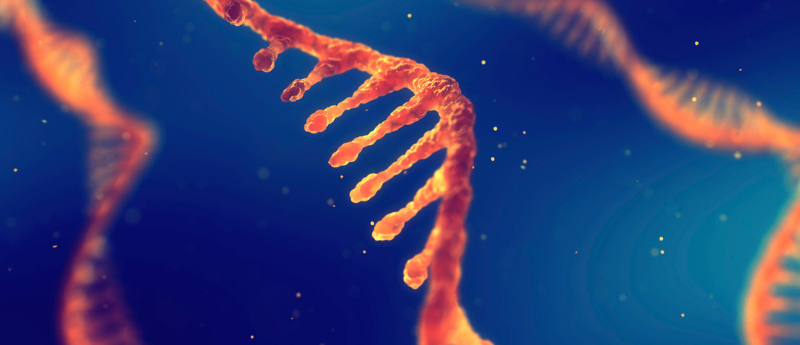Cancer remains a significant global health challenge, with millions of new cases diagnosed each year. Advances in cancer research have highlighted the importance of biomarkers in improving the early detection, diagnosis, and treatment of various cancers. Biomarkers are measurable indicators of a biological condition or disease and are crucial in the fight against cancer.

Understanding Cancer Biomarkers
Cancer biomarkers are biological molecules found in blood, other body fluids, or tissues that signify the presence of cancer. They play a crucial role in diagnosing and managing the disease. Based on their nature and the information they provide, these biomarkers can be categorized into several types.
Genetic biomarkers, for instance, include mutations and gene expression profiles that indicate the presence of cancer or a predisposition to it. A notable example is the BRCA1 and BRCA2 mutations commonly associated with breast cancer. Proteomic biomarkers are proteins whose altered levels signal the presence of cancer, such as HER2, which is overexpressed in some breast cancers. Metabolic biomarkers encompass metabolites and altered metabolic pathways characteristic of cancer cells, reflecting the metabolic changes in malignancies. Circulating biomarkers, like circulating tumor cells (CTCs) and cell-free DNA (cfDNA), can be detected in the blood and offer a non-invasive means of cancer diagnostics.
Biomarkers’ roles in cancer care are multifaceted. They are invaluable for early detection and diagnosis, capable of identifying cancer early, even before symptoms manifest, thereby significantly improving the chances of successful treatment. In monitoring disease progression and treatment response, regular measurement of biomarkers provides essential insights into how well a treatment works and whether the cancer is progressing or regressing. Furthermore, certain biomarkers can predict the aggressiveness of a tumor and its likely outcomes, which is critical for making informed treatment decisions.
By integrating these diverse types of biomarkers, healthcare providers can better understand and manage cancer, tailoring treatments to individual patients and enhancing overall care outcomes. Explore this cancer biomarkers list to appreciate their work and common use cases.
Lung Cancer Biomarkers
- Epidermal Growth Factor Receptor (EGFR) Mutations: Mutations in the EGFR gene are common in non-small cell lung cancer (NSCLC) and can predict responsiveness to EGFR-targeted therapies.
- Anaplastic Lymphoma Kinase (ALK) Rearrangements: ALK gene rearrangements occur in a subset of NSCLC and are targetable with specific ALK inhibitors.
- Programmed Death-Ligand 1 (PD-L1) Expression: PD-L1 expression on tumor cells can indicate responsiveness to immunotherapies that target the PD-1/PD-L1 pathway.
Diagnostic and Therapeutic Applications
- Targeted Therapies: EGFR and ALK mutations have led to the development of targeted therapies that specifically inhibit these pathways, offering effective treatment options for patients with these alterations.
- Immunotherapy: PD-L1 expression guides the use of immune checkpoint inhibitors, which have shown significant efficacy in treating lung cancer.
- Liquid Biopsy: Non-invasive tests that detect EGFR mutations and other biomarkers in blood samples provide a convenient way to monitor disease and treatment response.
Research is ongoing to identify new biomarkers to provide more comprehensive and precise cancer profiles. Integrating genomic, proteomic, and metabolomic data can offer a holistic understanding of cancer and improve personalized treatment strategies.
Breast Cancer Biomarkers
- Human Epidermal Growth Factor Receptor 2 (HER2): Overexpression of HER2 occurs in about 20% of breast cancers and is associated with aggressive disease. HER2-targeted therapies have significantly improved outcomes for these patients.
- Estrogen Receptor (ER) and Progesterone Receptor (PR) Status: Hormone receptor status guides hormone therapies, such as tamoxifen, which are effective in ER-positive and PR-positive breast cancers.
- BRCA1 and BRCA2 Gene Mutations: These genetic mutations significantly increase the risk of breast and ovarian cancers. Testing for BRCA mutations is crucial for risk assessment and preventive strategies.
Diagnostic and Therapeutic Applications
- Targeted Therapies: HER2-positive breast cancers are treated with drugs like trastuzumab, which specifically target the HER2 protein.
- Hormone Therapies: ER and PR status determine the use of hormone-blocking treatments, which are highly effective in hormone receptor-positive breast cancers.
- Genetic Testing and Risk Assessment: Testing for BRCA mutations helps identify high-risk ‘individuals’ decisions regarding preventive measures, such as prophylactic surgery.
Biomarkers in Other Cancers
In addition to lung and breast cancer, several other types of cancer also rely on specific biomarkers for diagnosis, monitoring, and treatment.
Prostate Cancer
- Prostate-Specific Antigen (PSA) Levels: PSA is a protein produced by the prostate gland, and elevated levels can indicate prostate cancer. PSA testing is widely used for screening and monitoring.
- Genetic Markers: TMPRSS2-ERG fusion is a common genetic alteration in prostate cancer and can aid in diagnosis and treatment decisions.
Colorectal Cancer
- KRAS, NRAS, and BRAF Mutations: These genetic mutations influence treatment options and prognosis in colorectal cancer.
- Microsatellite Instability (MSI) and Mismatch Repair (MMR) Status: MSI and MMR testing can identify patients who may benefit from immunotherapy.
Ovarian Cancer
- CA-125 Levels: CA-125 is a protein often elevated in ovarian cancer. It is used to monitor treatment response and detect recurrence.
- BRCA Mutations and Homologous Recombination Deficiency (HRD) Status: These genetic markers help identify patients who may benefit from PARP inhibitors, a targeted therapy.
Pancreatic Cancer
- CA 19-9 Levels: Elevated CA 19-9 levels can indicate pancreatic cancer, although it is not specific and can be elevated in other conditions.
- Genetic Alterations: Mutations in KRAS and TP53 are common in pancreatic cancer and provide insights into disease mechanisms and potential therapeutic targets.
Conclusion
Cancer biomarkers are revolutionizing how we detect, diagnose, and treat cancer. From lung to breast and other cancers, biomarkers provide critical insights into disease mechanisms and guide personalized treatment strategies. As research progresses and new biomarkers are discovered, the future of cancer care looks increasingly promising. Ongoing research and technological advancements will continue to shape the landscape of cancer diagnostics and therapy.
